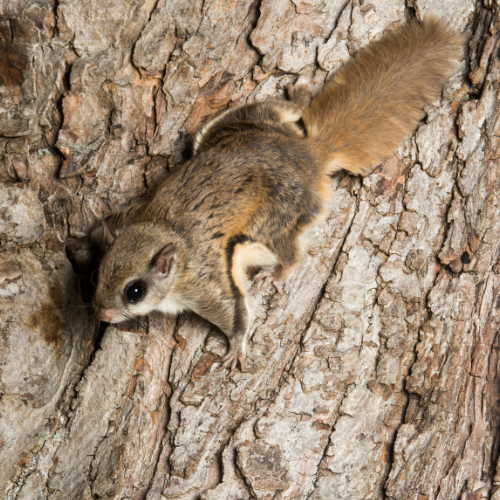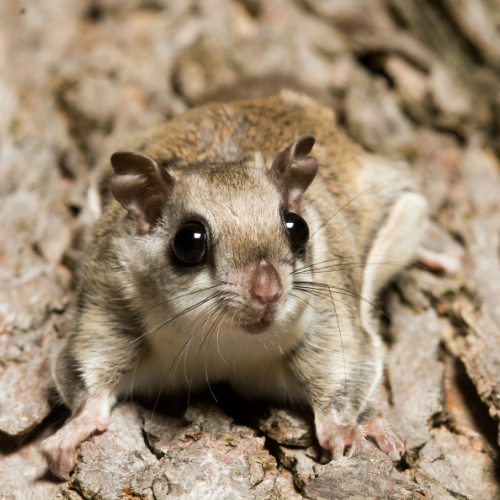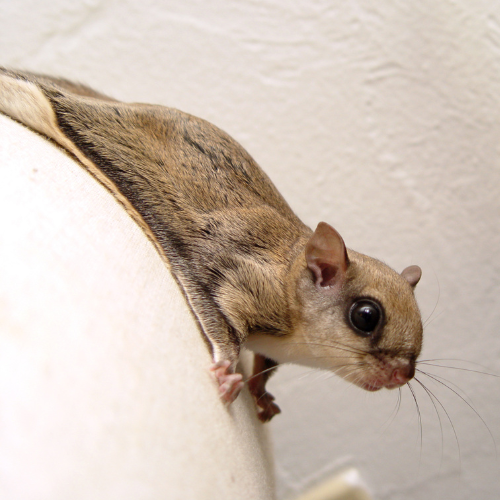Flying Squirrels
Introduction to
Flying squirrels are unique and fascinating creatures known for their ability to glide through the air. Unlike true flyers, these nocturnal rodents use a specialized membrane called the patagium to move gracefully from tree to tree. While they are delightful to observe in their natural habitat, flying squirrels can become problematic when they invade homes. This article explores the recognition, biology, habits, prevention, and professional handling of flying squirrels, offering a comprehensive guide to understanding and managing these intriguing animals.
Recognition
Flying squirrels are small to medium-sized rodents with distinctive features that aid in their gliding abilities. They have large, dark eyes adapted for night vision, and their fur is usually soft and silky, ranging in color from gray to brown. The most distinguishing feature is the patagium, a flap of skin that stretches from the wrist to the ankle, allowing them to glide. They also have a flattened tail that acts as a rudder during flight. Adult flying squirrels typically measure about 8 to 12 inches in length, including their tail. Signs of an infestation include scratching noises in the attic or walls, droppings, and chewed insulation or wiring.
Biology
Flying squirrels belong to the family Sciuridae and are divided into two primary species in North America: the northern flying squirrel (Glaucomys sabrinus) and the southern flying squirrel (Glaucomys volans). They are nocturnal and rely on their excellent vision to navigate and forage at night. Flying squirrels primarily feed on nuts, seeds, fruits, insects, and fungi. They breed twice a year, with litters typically consisting of 2 to 4 young. These squirrels do not truly fly but glide, using their patagium to cover distances of up to 150 feet between trees. They are social animals and often nest in communal groups to keep warm during winter.
Habits
Flying squirrels are active primarily at night, spending their days resting in tree cavities, nest boxes, or attics when they invade human homes. They are highly social and often live in groups, particularly during colder months. These squirrels are known for their agility and can easily navigate through dense forests or urban environments. In residential areas, flying squirrels can cause damage by chewing on electrical wiring, insulation, and wooden structures. Their droppings and urine can also lead to unpleasant odors and potential health risks.
Prevention
Preventing flying squirrels from entering your home involves sealing potential entry points and maintaining a clean environment. Inspect your home for gaps, cracks, or holes in the roof, eaves, and siding, and seal them with durable materials such as steel mesh or caulk. Trim tree branches that hang over or near your home to reduce access points. Install chimney caps and ensure that vents are covered with screens. Avoid leaving pet food or birdseed outside, as these can attract flying squirrels. Regularly check for signs of squirrel activity and address any potential entry points promptly.
Professional
If flying squirrels have already invaded your home, it is advisable to seek professional pest control services. STL Pest Control offers specialized solutions for managing and removing flying squirrel infestations. Their experienced technicians will conduct a thorough inspection to identify entry points and nesting sites. They use humane exclusion techniques, such as one-way doors, to allow squirrels to exit but not re-enter. After the squirrels have been safely removed, STL Pest Control can provide cleanup and repair services to address any damage caused by the infestation. Professional intervention ensures the effective and humane removal of flying squirrels, protecting both your home and the animals.



Our Office









